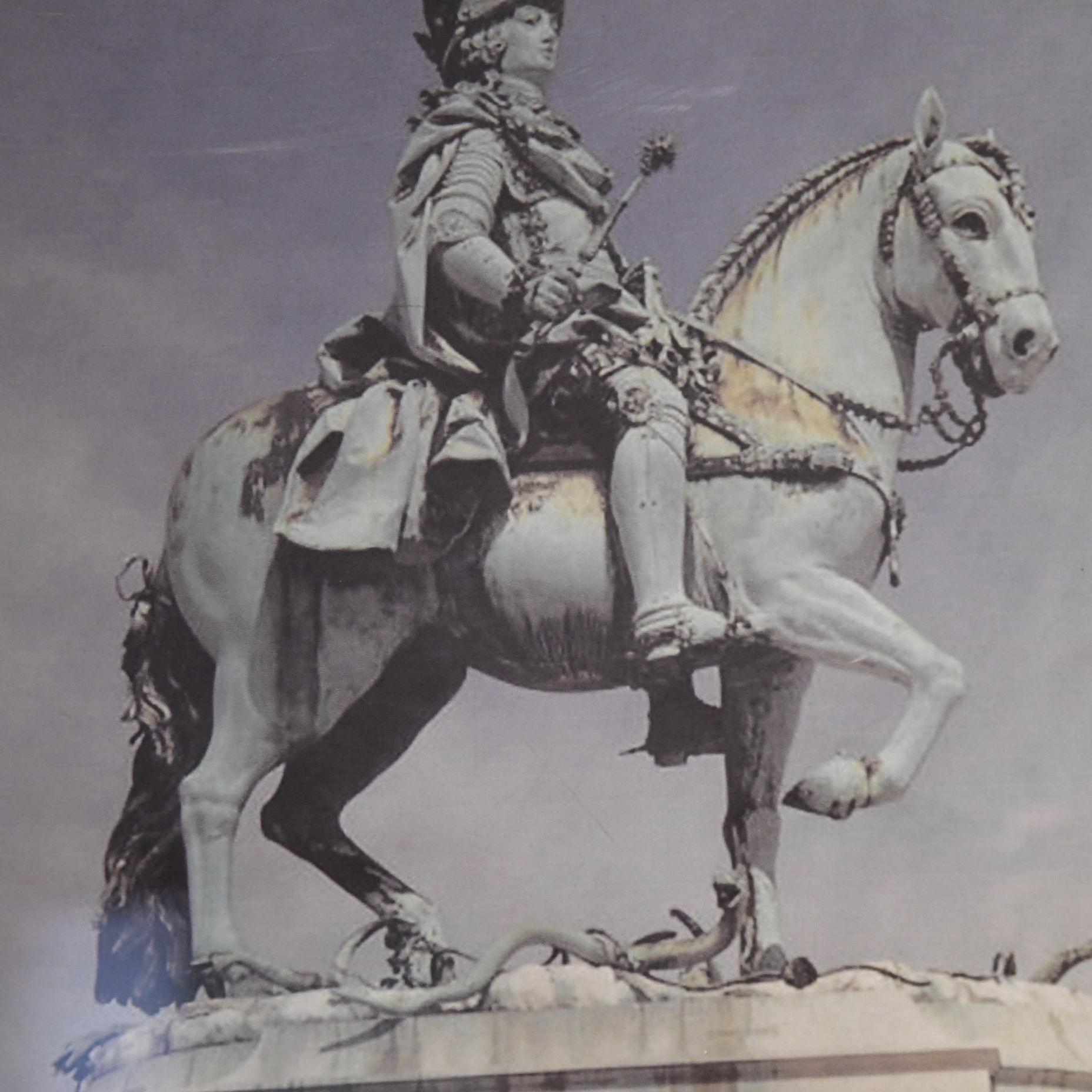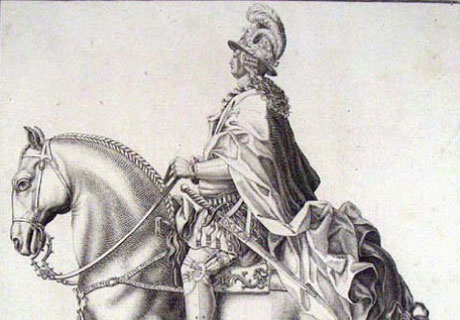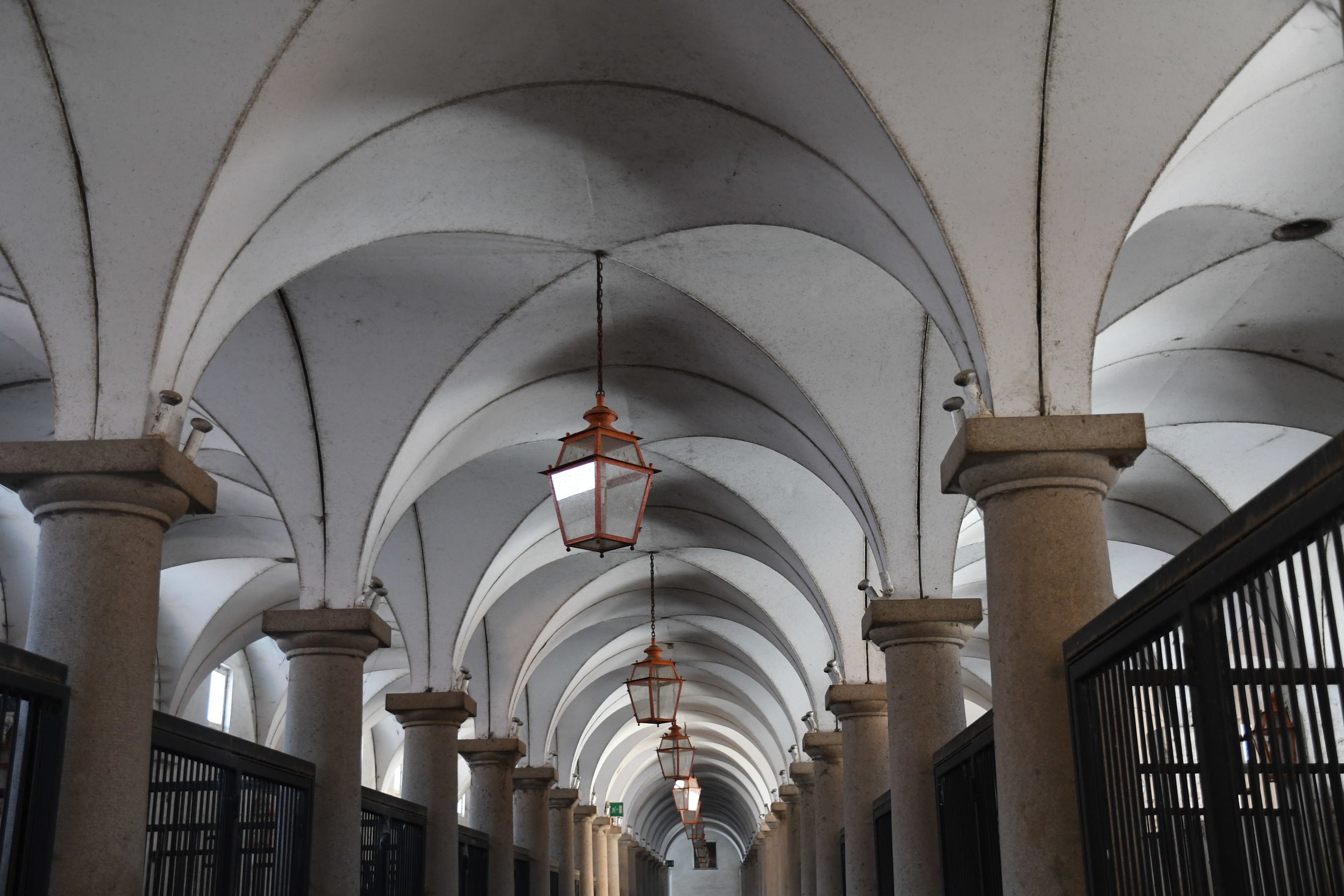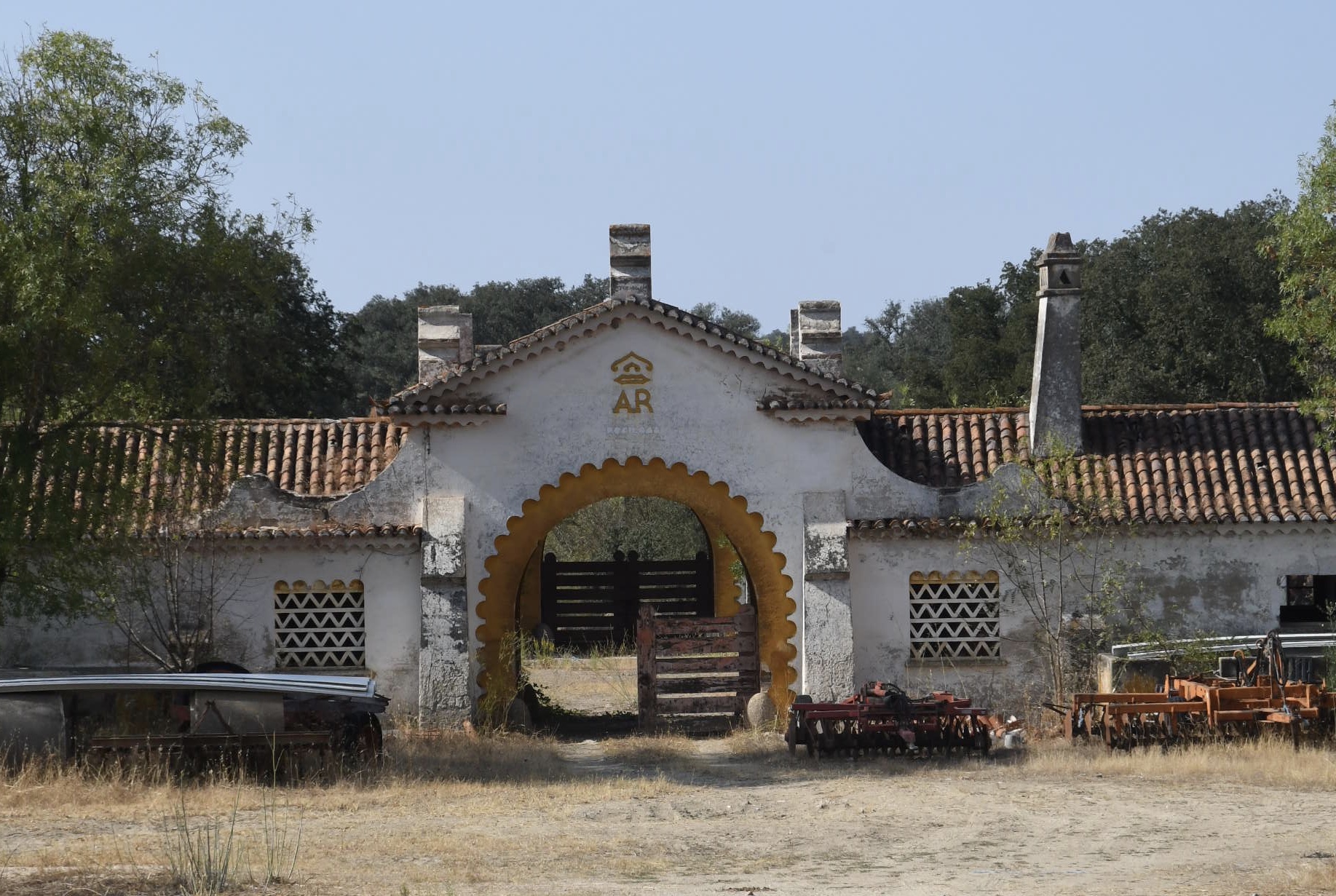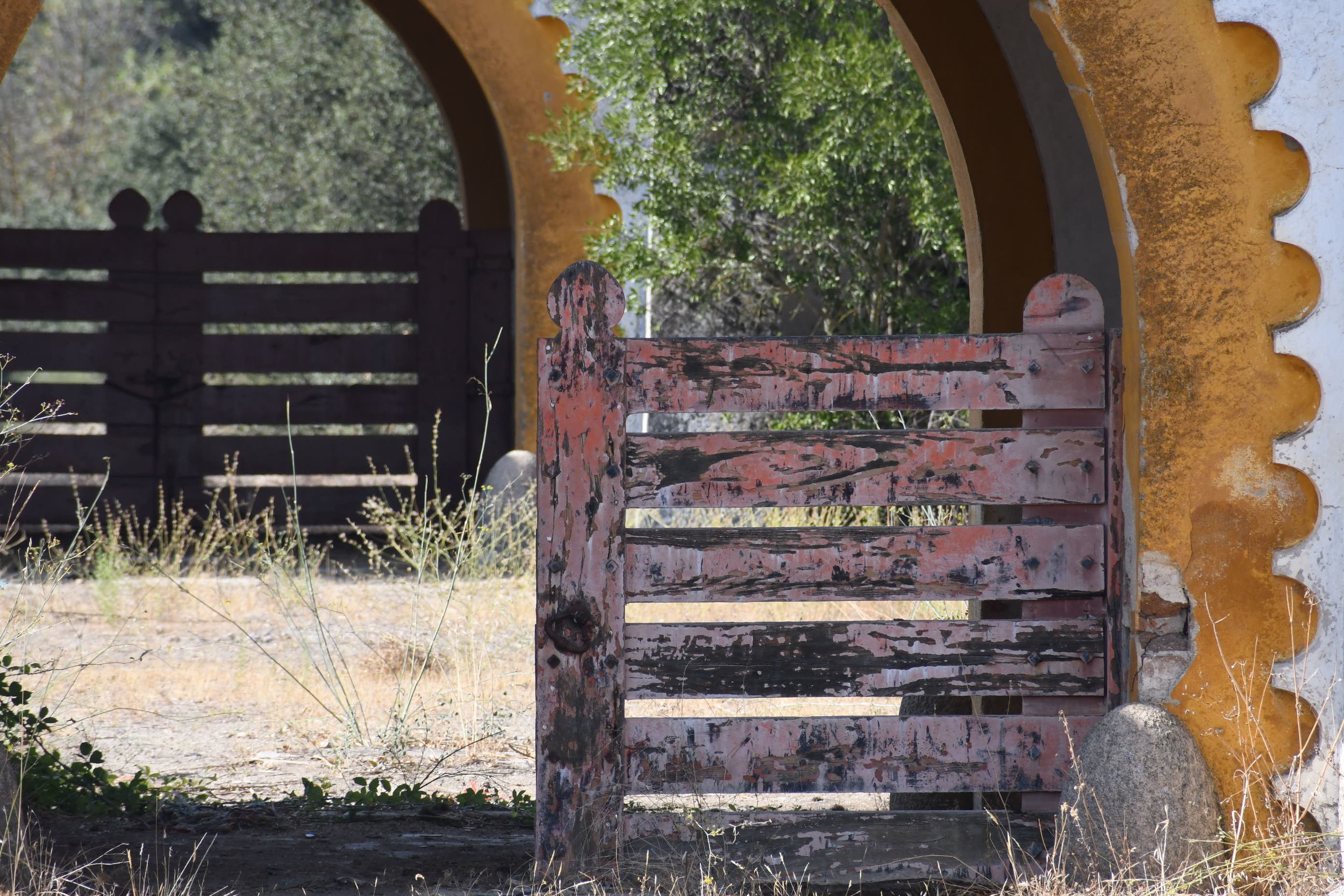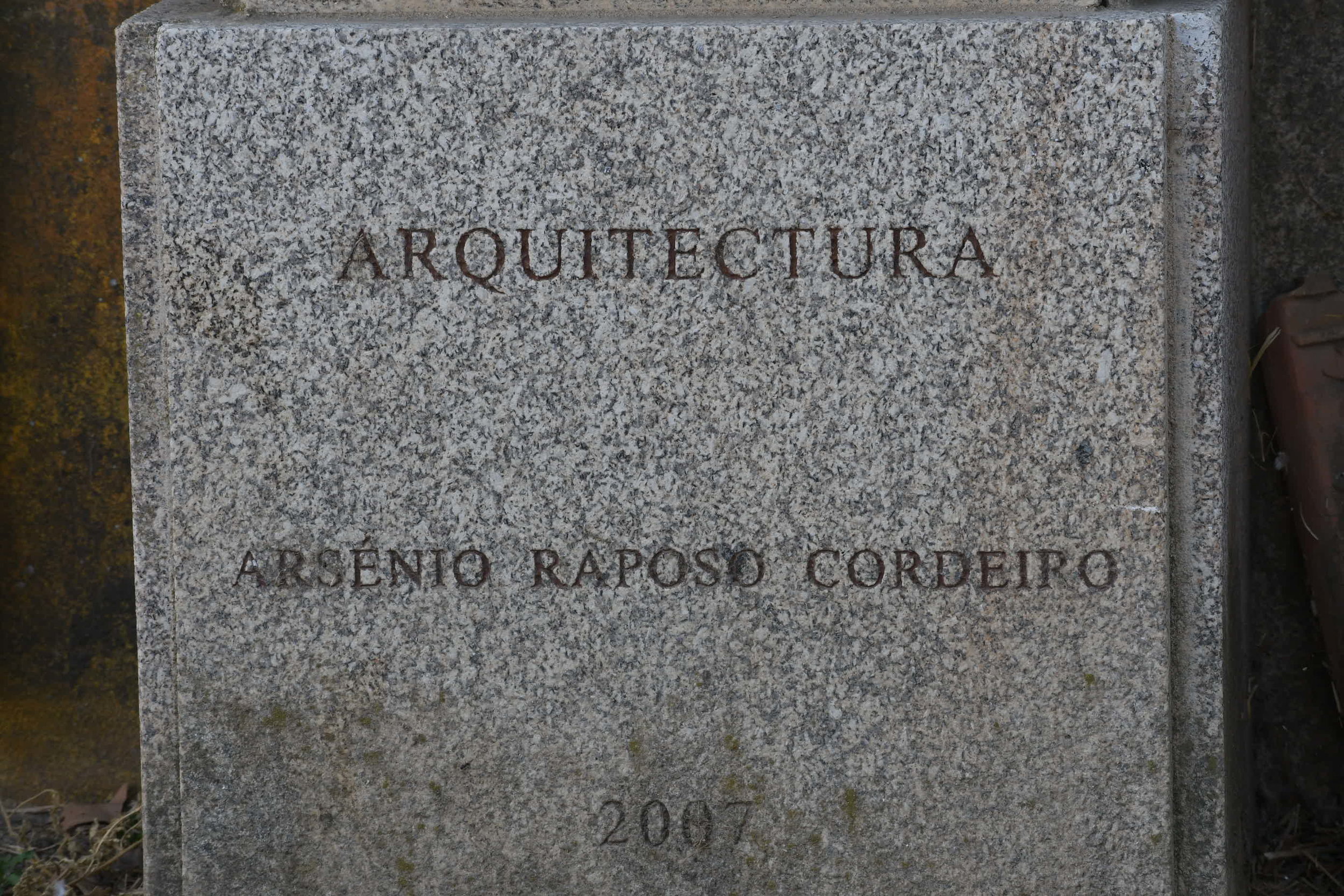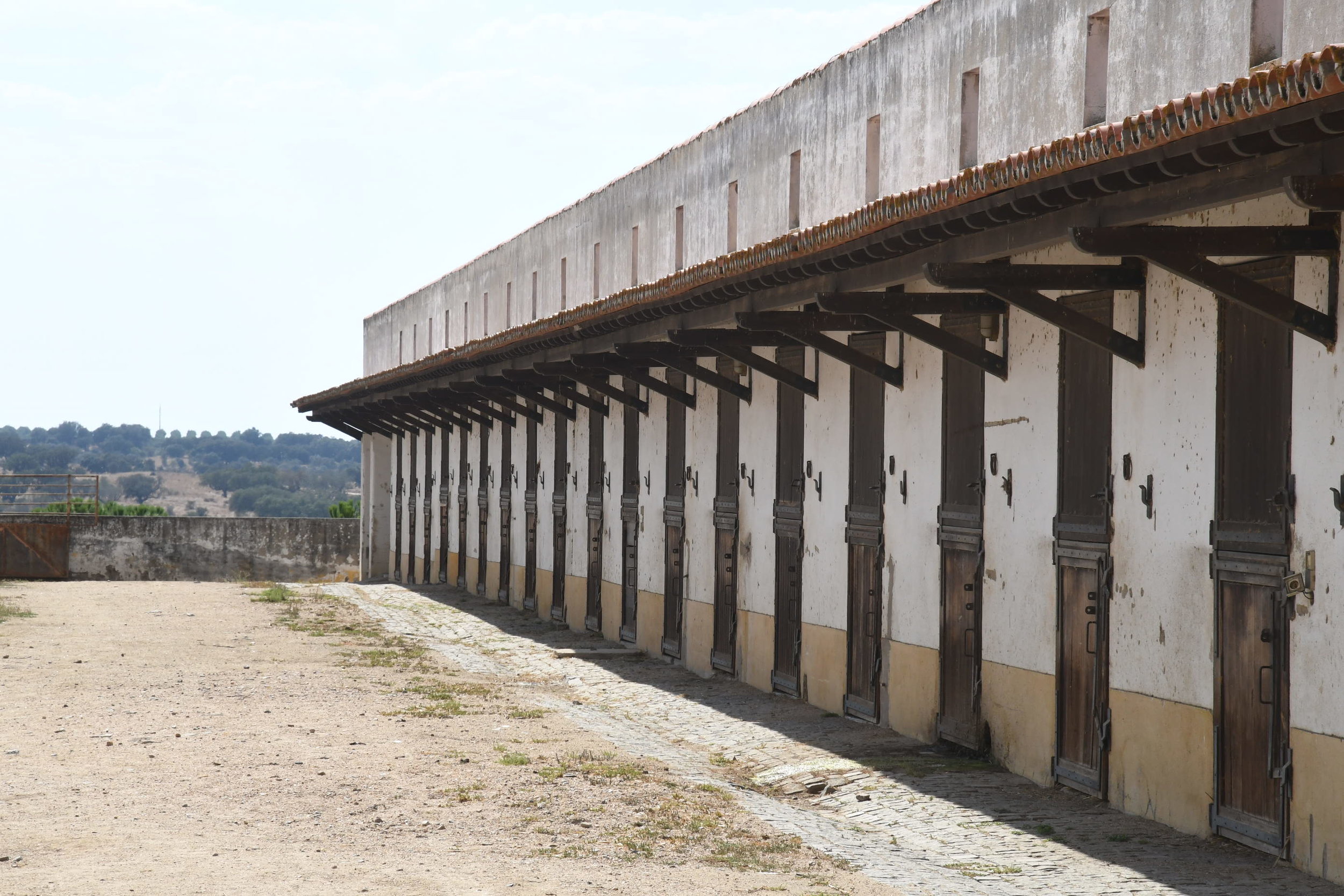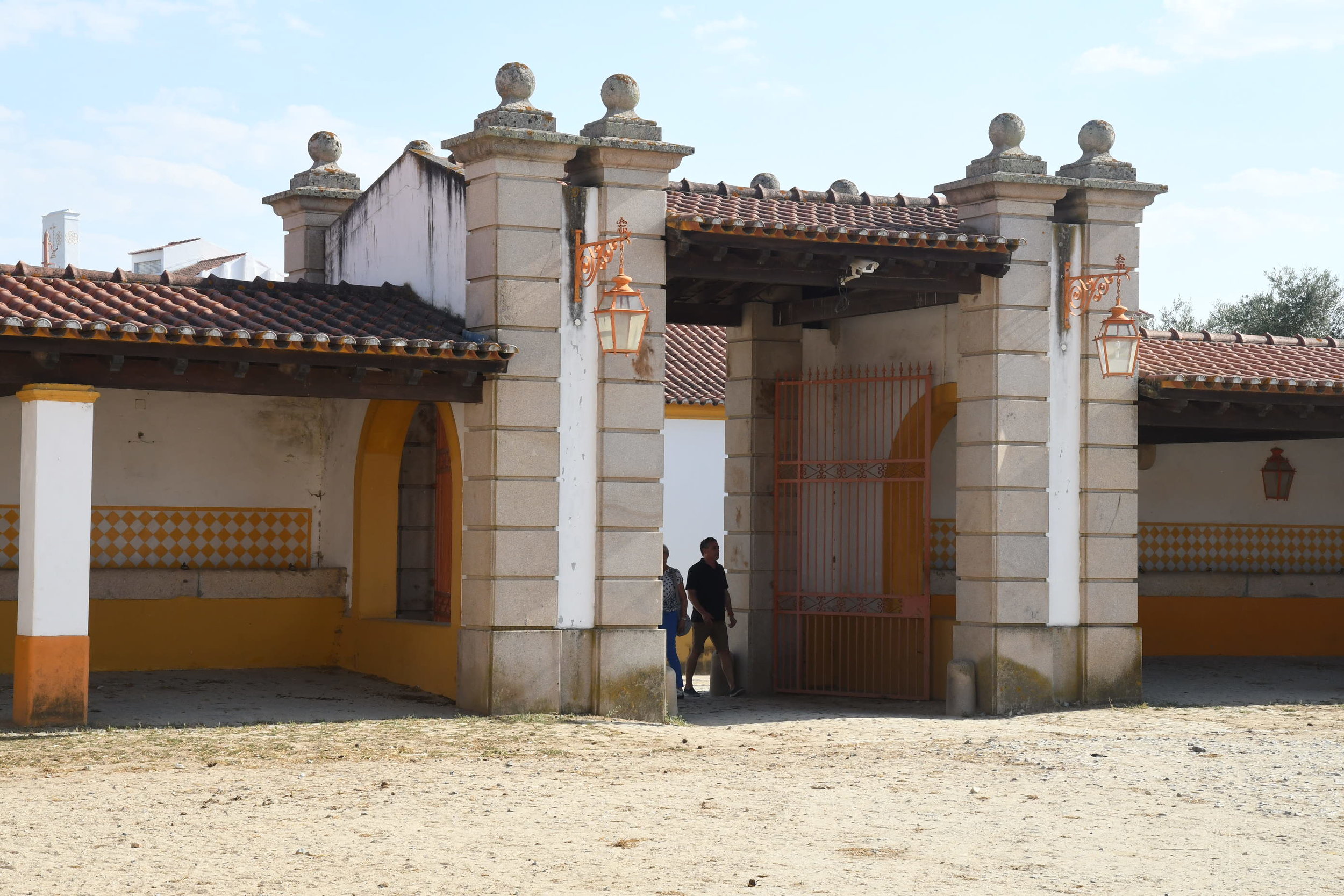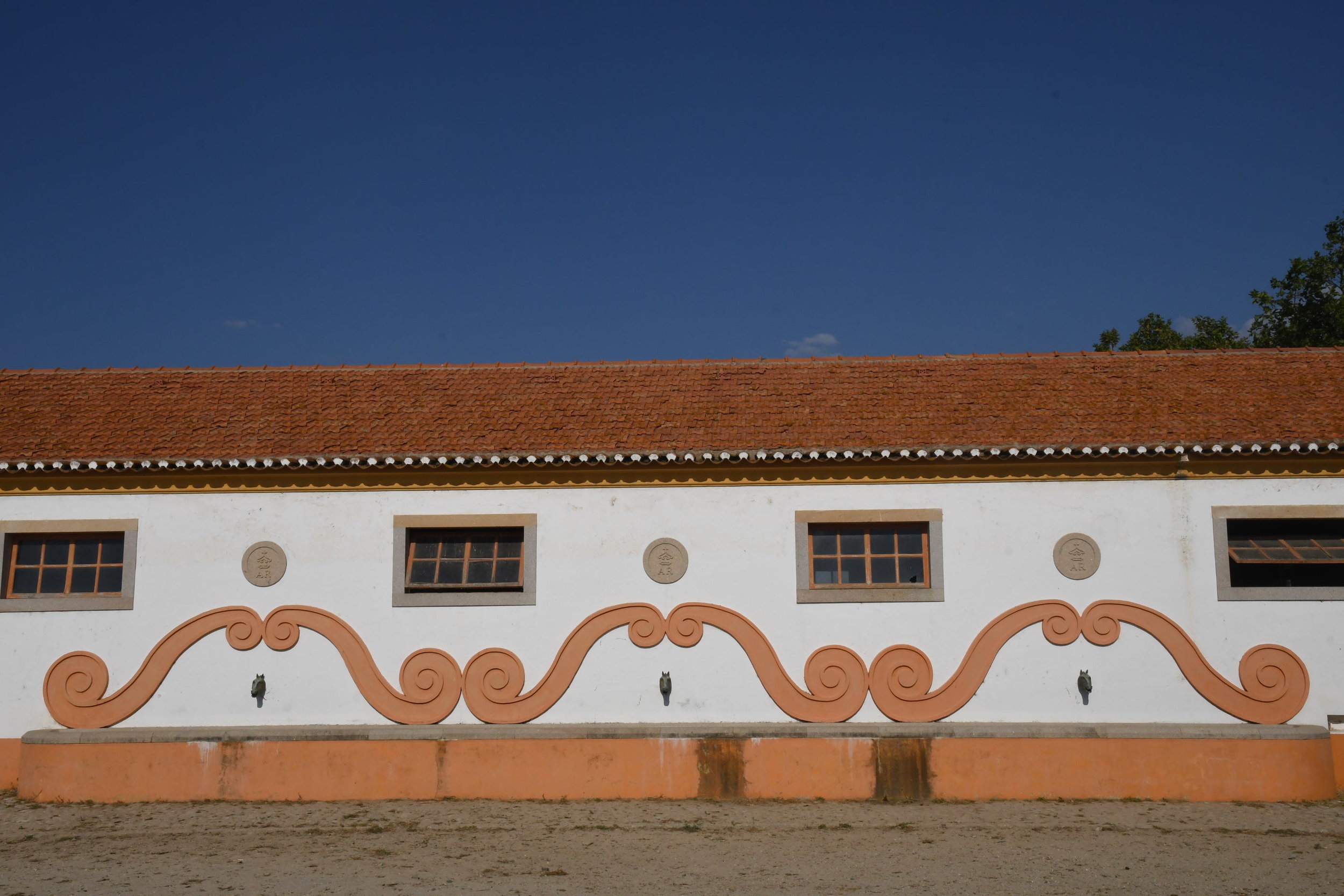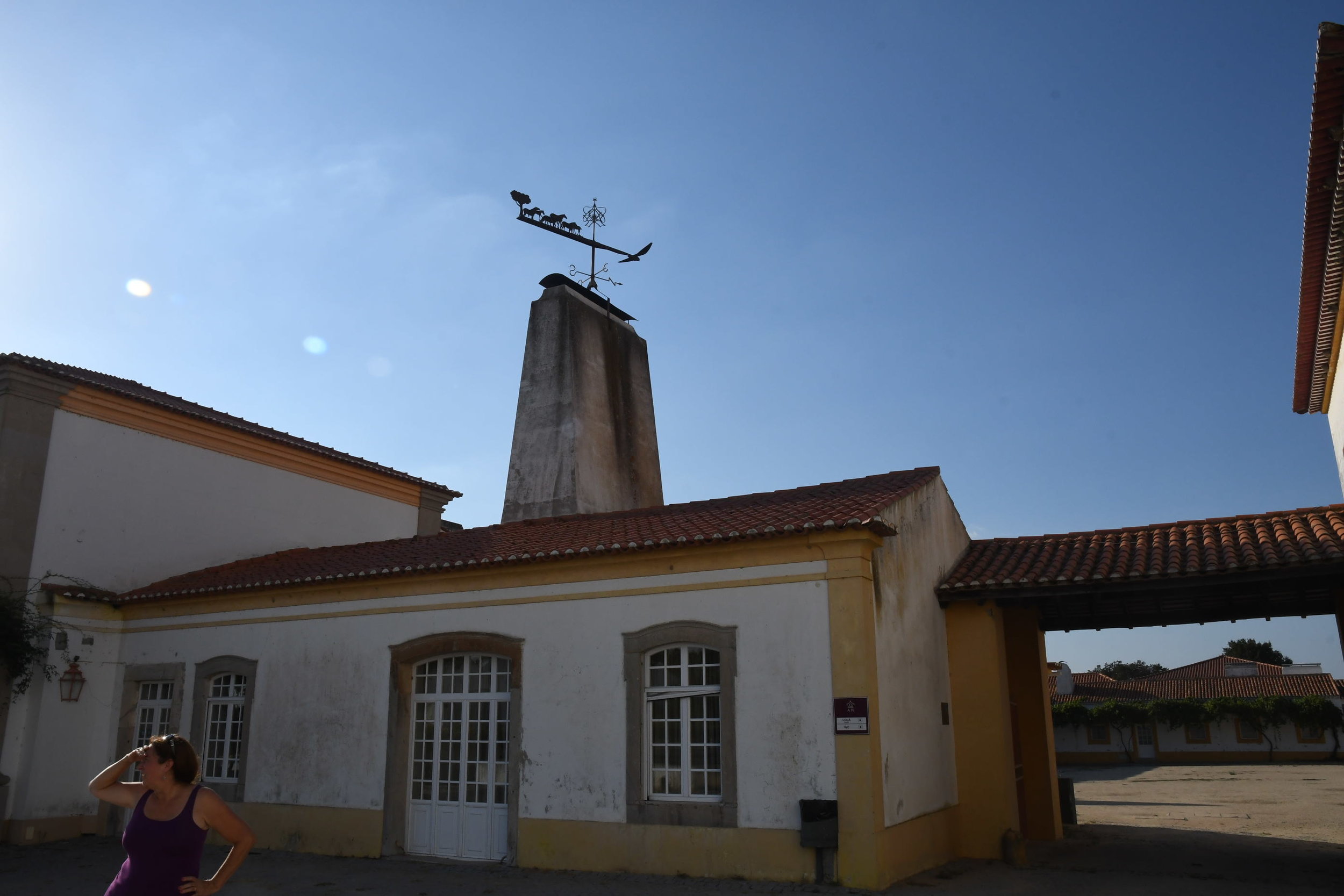The King's stud: Alter Real
The Alter Real lineage of the Lusitano horse is bred only at the Alter Real Stud in Portugal. This historic Stud was created in 1748 as part of a new coudelic policy, begun in 1708 by King D. João V. of Portugal, to breed horses that could match the grandeur and pageantry of the royal court. At the time, the Catholic Church was the state religion of Portugal and involved in the running of the government, hence – the usage of Coudelic* policies to regulate the breeding of horses in the Portuguese nation. Records indicate that the Alter lineage was originally developed from 300+/- Iberian mares imported from Spain in 1747, with some Portuguese mares also being part of the original herd.
Print of Alter Real young stock: 1800s
Coudelic policies of the time were dominated by the deep conviction that the national identity, and the artistic characterization of Picaria Real (the precursor of the Portuguese School of Equestrian Art) were related. These polices were based on the national production of saddle horses trained in the “High School arts”, now known as “classical dressage.” As early as the mid-eighteenth century, Alter Real horses were famous across Europe. The Royal Riding School was known as the best place to acquire high school trained horses and these horses were a valuable commodity bought and traded by other royals and people of importance throughout Europe for almost two hundred years.
The equestrian statue of King D. João V, completed in 1775 is replete with what was considered the best Lusitano of the Alter stud at the time. The story, as written at the Alter Stud is that the King’s sculptor asked the riding master Marques of Marialva, to produce the best Alter Real Lusitano to serve as a model for the statue. Marialva chose a horse named Gentil, whose image is captured by the wonderful bronze statue still found at the Terreiro do Paço square in Lisbon, which has in the center the statue of João IV on the ideal Alter horse. Also pictured is an engraving from the 1770s of King D. João V, on a Lusitano horse.
Gentil serves as a reminder of just how closely the ideal Lusitanos of Alter today compared to the Lusitanos of Alter from 240 years ago!
The Alter stud was raided by Napoleonic forces between 1809 and 1810. These military invasions were specifically to steal Lusitanos from the Alter stud, as well as from other parts of Portugal. In the years after, other breeds were introduced to bring the numbers back up to what they were prior to the invasions. With these introductions, the quality and consistency of the horses declined. Through careful selection, the herd was brought back to what it once was by the mid-nineteenth century.
Rui d’Andrade wrote about the horses of this era:
The horses (of Alter) were the finest production of the country from the mid-eighteenth to early twentieth century. The stallions from Alter had a major influence on a large part of the horses produced in Portugal.
In 1910, the Lisbon Regicide of King Carlos I of Portugal and his heir-apparent, Luís Filipe, Prince Royal of Portugal, was followed by a coup of the government whereby the Catholic church was no longer the state religion. These events triggered the closing of the Alter Real stud and the line was almost extinguished. The stallions were gelded, horses sold and all the studbook records were burned. The destruction of these records and horses is truly a tragedy for the Lusitano breed. During the early to mid-nineteenth century, most of the records readily available came from the Spanish studbook. lt can’t be denied that the Portuguese and the Spanish horses were considered one breed but it is also true that the Portuguese Coudelarias (studfarms) maintained separate lineages and that the Portuguese considered their horses of different lineages than that of the Spanish horses. Genetic analysis backs this up, and is able to differentiate the difference between the two breeds with 84% of the Lusitanos and 87% of Spanish horses genetically tested (Genetic Diversity in the Modern Horse Illustrated from Genome-Wide SNP Data, 2013).
The story of how Alter Real recovered is a fascinating one. Dr. Ruy d'Andrade (1880-1967) was a fierce defender of the monarchy and a specialist in Iberian horse breeds. In 1938, he bought two elderly Alter Real stallions at a sale, and then acquired another Alter stallion. The two stallions were named Vigilante and Regedor, and the third was named Marialva II. These are the three stallions that were used to recreate the Alter foundation lines on the sire side. Some of the Alter mares used came from horses that Dr. d'Andrade located and acquired. For the remainder of the mares, Dr. d’Andrade’s inlaws had bred Alter Real lineage horses on their estate, and some of these mares also contributed to rebuilding the lineage. In 1942, Dr. d'Andrade turned his small Alter lineage herd over to the Portuguese Ministry of Agriculture, when the stud was reopened. With this small foundational herd, the Alter lineage was reestablished and built into what it is today.
The Portuguese state has maintained ownership of the stud since, and continues to produce horses for use in high school dressage and for sale, through their yearly spring auction of young stock.
Coudelaria Alter Real can be visited and is truly a national treasure. The Alter Real stud is a 2000 acre (800 ha) property with beautiful stables, offices, arenas and a genetics laboratory amidst the rolling hills. It is located 125 miles (200 km) east of Lisbon, close to the border with Spain.
Alter Stud, previously a foundation, is managed by Companhia das Lezírias since 2013. Companhia das Lezírias is a publicly owned agroforestry business, specializing in cork oak and other agricultural products. It has 44,000 acres (18000 hectares) located 18 miles (30 km) north of Lisbon. At this location, the Couderalia Lezírias produces excellent quality dressage horses. Stated company goals include economic sustainability and the prevention of urbanization from spreading into the region. Since 2013, Companhia das Lezírias has been in charge of all the public studs.
At present, Alter Real has approximately 300 Lusitanos, most of whom are located on the Alter property, but many are loaned out to universities, equine management schools, and riding clubs. About 40 of the Alter horses can be found at the Portuguese School of Equestrian Art, located in the Belem district of Lisbon. The stud itself has both Alter Real (AR) and Coudelaria Nacional (CN) horses. These days, the Alter Real breeding program incorporates other lineages to produce a horse that is more desirable for the equestrian market, particularly in dressage. Alter Real horses carry a AR brand and a horse is only an Alter Real Lusitano if it was born on the premises of the Alter Real stud. Most Alter horses are bay in color, a feature of the lineage.
At Alter, there is an equine management school and a Molecular Genetics Laboratory that certifies the identity of the Lusitanos and keeps a DNA bank of all Lusitanos registered with the APSL. Visiting the Alter stud when in Portugal is an absolute must for the Lusitano enthusiast. The ancient architecture is combined with a fantastic stable, designed pro bono in the classic Portuguese style by Arsênio Raposo Cordeiro. Senhor Cordeiro, who recently passed away, was an architect of some fame, as well as a Lusitano horse breeder and co-founder of the APSL. Also enjoyable is the Alter Real museum and gift shop. If planned in advance, horse and carriage rides are available and there is a guest house for rent. As mentioned previously, the most important annual event is the horse auction in April, which attracts a couple of thousand people each year to view and buy young stock bred at the stud.
* Coudelic (definition): of or relating to the Roman Catholic Church and its doctrines, ceremonies, or government. The word Coudelaria is translated to stud farm in English and probably derives from the word Coudelic and is in reference to the Catholic policies that originally formed the basis for the Alter Real stud in 1748.
Copyright, Jill Glasspool Malone, PhD 2019-present


